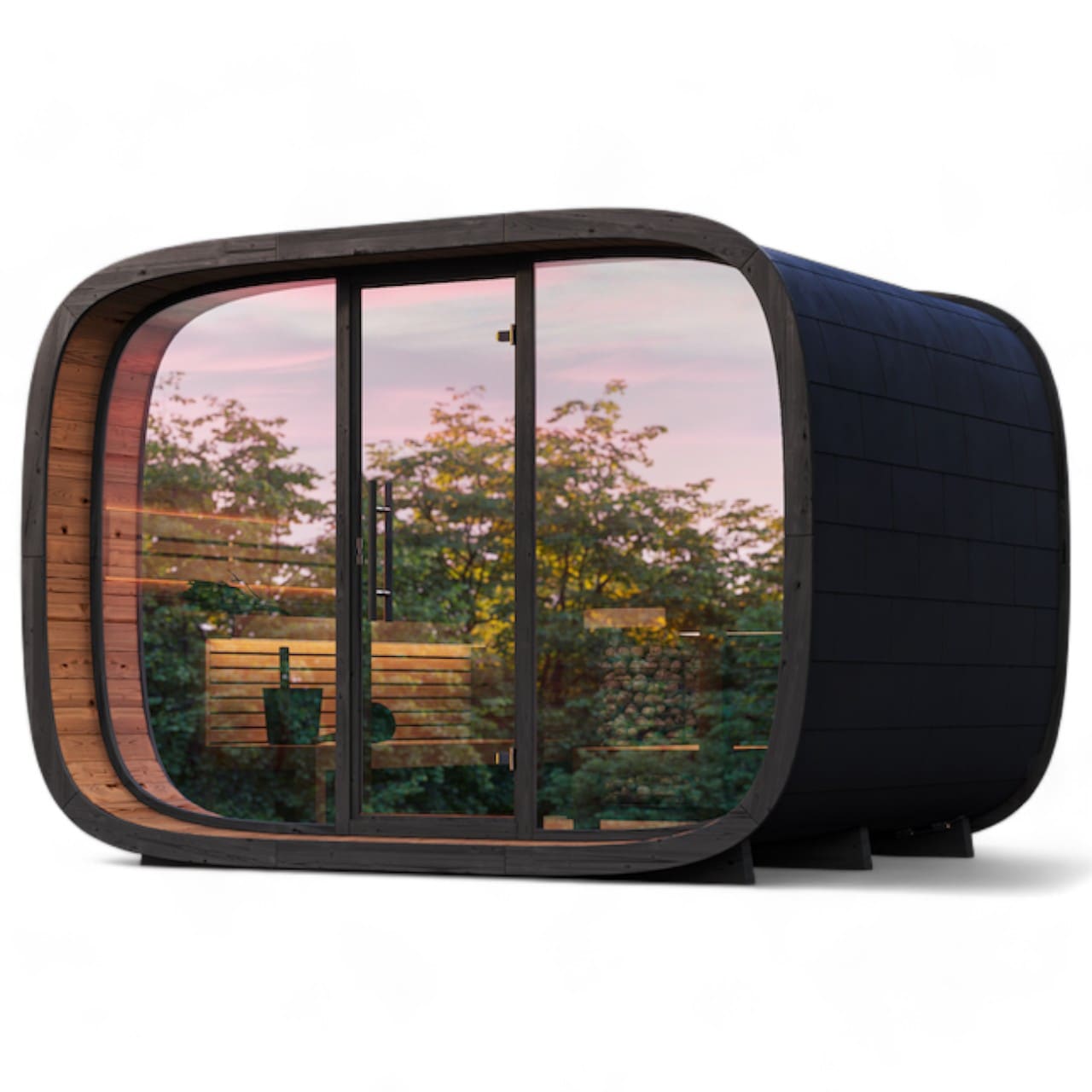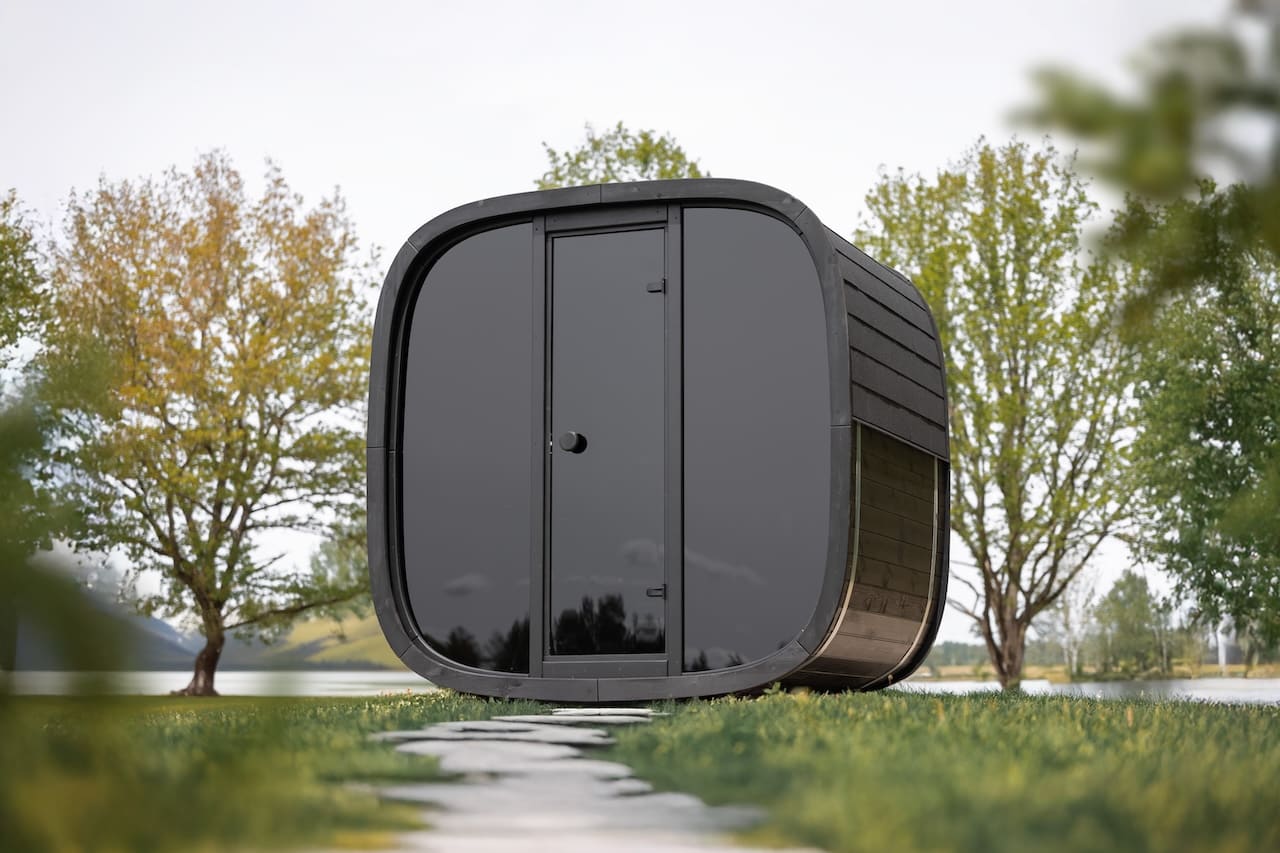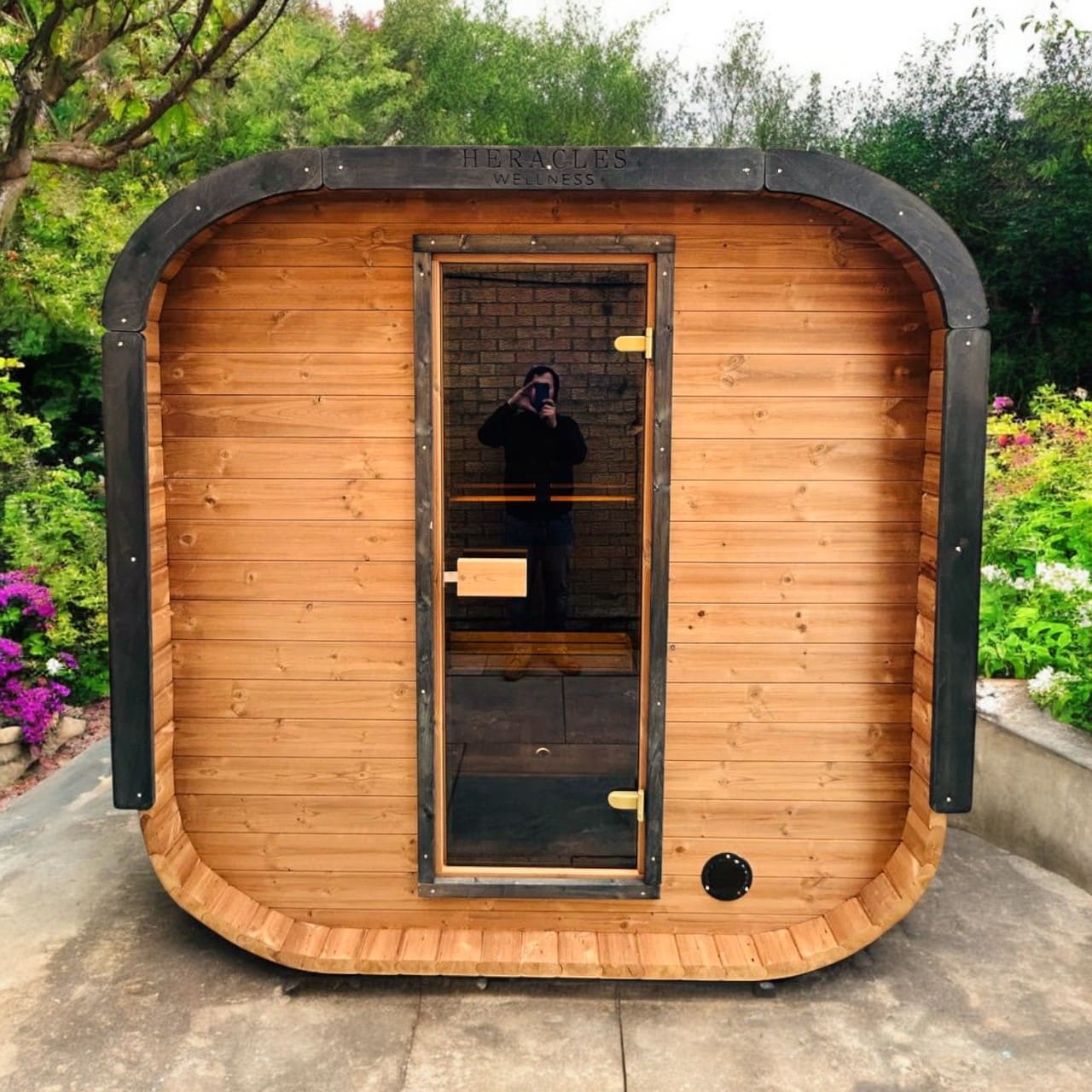Saunas have been used for centuries for their health benefits. They are known to help with relaxation, detoxification, and pain relief. However, with the rise of technology, there are now two types of saunas available: traditional saunas and infrared saunas.
Traditional saunas use heated stones to produce steam, which raises the temperature of the room. The steam is created by pouring water over the heated stones, and the heat is transferred to your body through the air. In contrast, infrared saunas use infrared heaters to directly warm your body without heating the air around you. The heat is absorbed by your body, which increases your core temperature and produces a sweat that helps to detoxify your body.
Both traditional and infrared saunas have their own unique benefits. Understanding the differences between the two can help you decide which one is best for you. In this article, we will explore the benefits of sauna use, the differences between traditional and infrared saunas, and scientific research related to saunas. We will also provide tips on how to have the best sauna experience possible.
Key Takeaways for your sauna experience
- Saunas typically have been used for centuries for their health benefits.
- Traditional saunas use heated stones to produce steam, while infrared saunas use infrared heaters to directly warm your body.
- Understanding the differences between traditional and infrared saunas can help you decide which one is best for you.
Health Benefits of Sauna Use - Maximise Your Sauna Experience
Using a sauna can have several benefits for your health and wellness. Here are some of the benefits you can experience from regular sauna use:
Improved Circulation
Sauna use can improve blood flow and circulation throughout your body. This can help to reduce muscle soreness, joint pain, and even headaches. The heat from the sauna causes your blood vessels to dilate, which allows for better circulation.
Detoxification
Sweating is one of the main ways our bodies eliminate toxins. Sauna use can help to increase sweating, which can aid in the detoxification process. Regular sauna use can also help to improve kidney function and reduce the risk of kidney disease.
Relaxation and Stress Relief
Sauna use can be a great way to relax and de-stress. The heat from the sauna can help to reduce tension in your muscles and promote feelings of relaxation. Additionally, the release of endorphins during sauna use can help to improve your mood and reduce stress levels.
Improved Skin Health
Sauna use can help to improve the health of your skin. The heat from the sauna can help to open up your pores and increase blood flow to your skin. This can help to reduce the appearance of acne, wrinkles, and other skin blemishes.
Improved Cardiovascular Health
Regular sauna use can help to improve your cardiovascular health. Sauna use can help to lower blood pressure, reduce the risk of heart disease, and improve overall heart health. Additionally, sauna use can help to improve your body's ability to regulate core body temperature.
Weight Loss
Sauna use can help to promote weight loss by increasing your heart rate and metabolic rate. The heat from the sauna can also help to increase your body's production of growth hormone, which can help to burn fat and build muscle.
Overall, sauna use can have several health and wellness benefits. Whether you choose a traditional sauna or an infrared sauna, regular sauna use can be a great addition to your wellness routine.
Understanding Traditional Steam Sauna
Traditional saunas aka Finnish Saunas have been used for centuries as a means of relaxation, detoxification, and healing. They are typically heated using wood, stones, steam, or fire, and offer a range of health benefits through the use of heat therapy.
In a traditional sauna, the air is heated first, which in turn heats the body. The temperature in a traditional sauna can reach up to 90°C, and the humidity can range from 10% to 20%. This high temperature causes the body to sweat, which helps to eliminate toxins and other impurities from the body.
The heat in a traditional sauna is generated by a stove that is typically made of cast iron or steel. The stove is heated using wood or other fuels, and the heat is then transferred to the stones, which are placed on top of the stove. Water is then poured over the stones to create steam, which helps to increase the humidity in the sauna.
Traditional saunas are typically made of wood, such as cedar or hemlock. The wood is chosen for its ability to resist rot and decay, and for its aesthetic appeal. The interior of the sauna is usually lined with benches, which are made of the same wood as the walls and ceiling.
In summary, traditional saunas use heat therapy to provide a range of health benefits, such as relaxation, detoxification, and healing. They are typically heated using wood, stones, steam, or fire, and are made of wood such as cedar or hemlock.
Understanding Infrared Saunas
If you're considering getting a sauna, you might be wondering about the differences between traditional and infrared saunas. When it comes to Infrared saunas use infrared light to penetrate and heat your body directly, while traditional saunas heat the air first. This means that infrared saunas can operate at a lower temperature than traditional saunas.
Infrared saunas use infrared lamps or infrared heaters to produce the heat. These lamps or heaters emit infrared light, which heats your body directly. The heat from an infrared sauna penetrates deeper into your skin than the heat from a traditional sauna, so you may sweat more and feel more relaxed.
One of the benefits of an infrared sauna is that it can be easier to use at home than a traditional sauna. Infrared saunas are often smaller and less expensive than traditional saunas, and they don't require as much maintenance. Additionally, infrared saunas can be more comfortable to use because they don't get as hot as traditional saunas.
It's important to note that there is limited research on the benefits of infrared saunas compared to traditional saunas. However, some studies have suggested that infrared saunas may help with conditions such as high blood pressure, congestive heart failure, and rheumatoid arthritis.
If you're interested in trying an infrared sauna, make sure to talk to your doctor first, especially if you have any health conditions. You should also make sure to drink plenty of water before and after your sauna session to stay hydrated.
Best Type of Sauna - Difference Between Infrared and Traditional Saunas
When diving into the world of saunas, one quickly realises there's a distinction between infrared saunas and traditional saunas. Each type of sauna offers its unique sauna experience and health benefits, but they differ in their heating mechanisms and the kind of warmth they provide.
Traditional saunas, often reminiscent of Finnish saunas, utilise a sauna heater with heated stones or produce steam, creating what many refer to as a steam sauna. This method heats the air, which subsequently warms the body. In contrast, infrared saunas employ special lamps or heating elements that emit infrared light, more specifically, infrared radiation, to directly heat the body without warming the surrounding air. This direct approach means infrared saunas operate at milder temperatures, ranging from 37-65 degrees Celsius. Traditional saunas, on the other hand, can soar up to a scorching 93 degrees Celsius.
One of the standout benefits of infrared saunas is their user-friendly nature. Their milder heat makes them more comfortable, allowing for prolonged sauna sessions. Furthermore, their design often caters to home sauna use, eliminating the need for intricate plumbing or electrical setups, and they generally come with a more affordable price tag compared to their traditional counterparts.
However, traditional saunas hold their ground with a rich history spanning centuries, deeply embedded in various cultures. Their communal design can accommodate multiple individuals simultaneously, fostering a social sauna experience. The steam produced in these saunas can alleviate respiratory issues and muscle stiffness. Moreover, the intense sweating they induce aids in flushing out toxins.
When it comes to the sauna vs debate, personal preferences play a significant role. Some individuals are drawn to the dry sauna ambiance of infrared saunas, while others lean towards the moist warmth traditional saunas offer. Regardless of the difference between infrared and traditional saunas, hydration remains paramount. Both can lead to dehydration, so replenishing fluids before and after a sauna session is crucial. For newcomers to the world of saunas, starting with milder temperatures and gradually acclimating to the heat is advisable.
In wrapping up, both infrared saunas and traditional saunas present a plethora of health benefits. The choice between the two boils down to individual preferences, with each offering a unique sauna experience.
Scientific Research and Saunas - Traditional vs Infrared
When it comes to the health benefits of saunas, there is a lot of research to consider. The debate often centres around infrared saunas vs traditional saunas. While traditional saunas, sometimes referred to as traditional steam saunas or Finnish-style saunas, have been studied for decades, infrared saunas are a newer technology that harnesses infrared light to heat. Here's what the research says about the benefits and drawbacks of both types of saunas.
Traditional Saunas
Traditional saunas have been used for centuries, and many people swear by their health benefits. Sauna bathing, especially in traditional saunas, is deeply rooted in many cultures. According to a systematic review published in the Journal of Human Hypertension, regular dry sauna bathing has been linked to a lower risk of cardiovascular disease, dementia, and Alzheimer's disease. Saunas have also been found to improve longevity and reduce the risk of all-cause mortality.
However, traditional saunas are not without their drawbacks. The heat of a sauna, especially the temperatures of traditional saunas which are usually hotter, can be intense. People with rheumatoid arthritis or chronic pain may find these high temperatures uncomfortable or even painful. Additionally, some people experience negative effects from using saunas, such as dehydration, dizziness, or nausea.
Infrared Saunas
Infrared saunas, sometimes referred to as far infrared saunas, are a newer technology that uses infrared rays to heat the body directly, unlike traditional saunas which heat the air around you. This difference between infrared and traditional saunas means that infrared saunas can operate at milder temperatures. Proponents of infrared saunas claim that they offer an authentic sauna experience that's more comfortable, easier to use at home, and less expensive than traditional saunas. However, the benefits of infrared saunas, especially when compared to the benefits of traditional saunas, are still being explored.
One study published in the Journal of Human Kinetics found that infrared sauna sessions can mimic the physiological responses of moderate exercise. However, the study was small, and more research is needed to confirm these findings.
Overall, the research on saunas suggests that both saunas and infrared saunas offer a plethora of health benefits. The choice of sauna for your home, whether it's a traditional sauna or an infrared sauna, often comes down to personal preference and the specific sauna experience one is seeking.
Things to Consider for the Best Sauna Session - Use Your Sauna Optimally
When it comes to choosing between an infrared sauna vs a traditional sauna, there are a few things you should consider to ensure you have the best sauna experience possible.
Type of Sauna
The sauna room's design and the type of sauna you choose, whether it's based on infrared heat or steam, can greatly influence your sauna experience.
Temperature
Saunas are generally known for their heat, but the level varies. Traditional saunas are hot, often reaching temperatures between 176 to 200 degrees Fahrenheit. In contrast, infrared saunas, which use infrared waves, operate at lower temperatures, ranging from 113 to 140 degrees Fahrenheit.
Duration
How long you stay in the sauna is crucial. Traditional saunas usually recommend sessions between 10 and 20 minutes, while infrared saunas can extend up to 45 minutes.
Hydration
Given the heat from the sauna, it's vital to stay hydrated. Drink water before, during, and after your sauna bath.
Clothing
Your choice of clothing can influence the infrared light's penetration in infrared saunas. While a towel or swimsuit is common in traditional saunas, loose-fitting attire is suggested for infrared ones.
By considering these factors and understanding the differences between infrared and traditional saunas, you can make an informed decision and start reaping the benefits of your chosen sauna type. Whether you're leaning towards the traditional steam sauna or the infrared sauna that uses infrared light, both promise a rejuvenating experience.
Best sauna to use - Infrared Saunas vs Traditional Saunas - FAQ & Guide to the benefits
What are the benefits of using a combination infrared and traditional sauna?
Combining the elements of both infrared and traditional saunas, one such sauna offers a unique experience. The synergy of these two types of infrared saunas and traditional Finnish-style saunas can provide a range of benefits. These benefits include increased relaxation, stress relief, improved circulation, and the benefits of heat therapy. The combination of heat sources can also help detoxify the body and enhance skin health.
What are the benefits of a traditional sauna?
Traditional saunas, which are typically wooden rooms, use high heat to warm the air, raising your body temperature. This process can help improve circulation, reduce muscle tension, and provide a relaxing environment. Saunas have been found to offer a meditative space beneficial for reducing stress and anxiety. When using a traditional sauna, it's essential to note the minutes for a traditional sauna session and adjust accordingly.
What are the benefits of an infrared sauna?
Infrared saunas utilise infrared rays to heat the body directly, promoting improved circulation, reduced inflammation, and pain relief. They can also be more comfortable than traditional saunas, as they operate at lower temperatures and produce less humidity. The health benefits of infrared saunas are believed to be vast, from detoxification to enhanced relaxation.
What are the differences between a traditional sauna and an infrared sauna?
The primary difference between infrared saunas and traditional saunas lies in their heating methods. While traditional saunas heat the air, which subsequently warms your body, infrared saunas use infrared light to directly heat your body. As a result, infrared saunas operate at lower temperatures and produce less humidity than traditional saunas.
Can you convert an infrared sauna to a traditional sauna?
Converting an infrared sauna to a traditional sauna is possible, but it might be a task that will set you back in terms of modifications to the sauna room, heating system, and ventilation. Before buying a traditional sauna or making any alterations, it's advisable to consult with infrared sauna companies or professional sauna installers.
Which type of sauna is best for improving health?
Both traditional or infrared saunas offer a plethora of health benefits. The best sauna to use depends on individual needs and preferences. Both types of saunas can be used to help improve circulation and reduce muscle tension, while infrared saunas, with their infrared rays heat, might excel in reducing inflammation and providing pain relief. Before you use your sauna, especially if you have health concerns, consulting with a healthcare professional is recommended. This guide to the benefits aims to provide a comprehensive overview, but personal experiences may vary.
How do the costs of traditional vs infrared saunas compare?
When considering the financial aspect, an infrared sauna will set you back slightly less than a traditional sauna in terms of initial costs. However, the long-term operational costs can vary based on usage, maintenance, and energy prices. It's essential to factor in both initial and ongoing expenses when making a decision.
What are the primary differences when comparing infrared vs traditional saunas?
The main distinction between infrared and traditional saunas is their heating method. Infrared saunas use infrared light to directly heat the body, while traditional saunas heat the air around you, which then warms your body. This difference means that infrared saunas typically operate at lower temperatures and might be more comfortable for some users.
Can you explain the difference between a sauna and steam room?
Certainly! A sauna is a wooden room or cabin that uses dry heat to induce sweating, while a steam room is typically tiled and uses moist heat. The humidity in a steam room is much higher than in either type of sauna. The choice between a sauna and steam room often comes down to personal preference regarding the humidity level and type of heat.
How often are saunas used for therapeutic purposes?
Saunas are used worldwide for relaxation and therapeutic purposes. The effects of regular dry sauna sessions can include improved circulation, detoxification, and stress relief. Many cultures have integrated sauna sessions into their weekly routines, valuing the health and relaxation benefits they offer.
What kind of maintenance do traditional saunas require?
Traditional saunas require regular cleaning to prevent mold and bacteria growth due to the moisture produced. Additionally, the wooden interiors might need occasional treatment to maintain their appearance and integrity. The heating elements and stones should also be checked periodically to ensure they function correctly.















Leave a comment